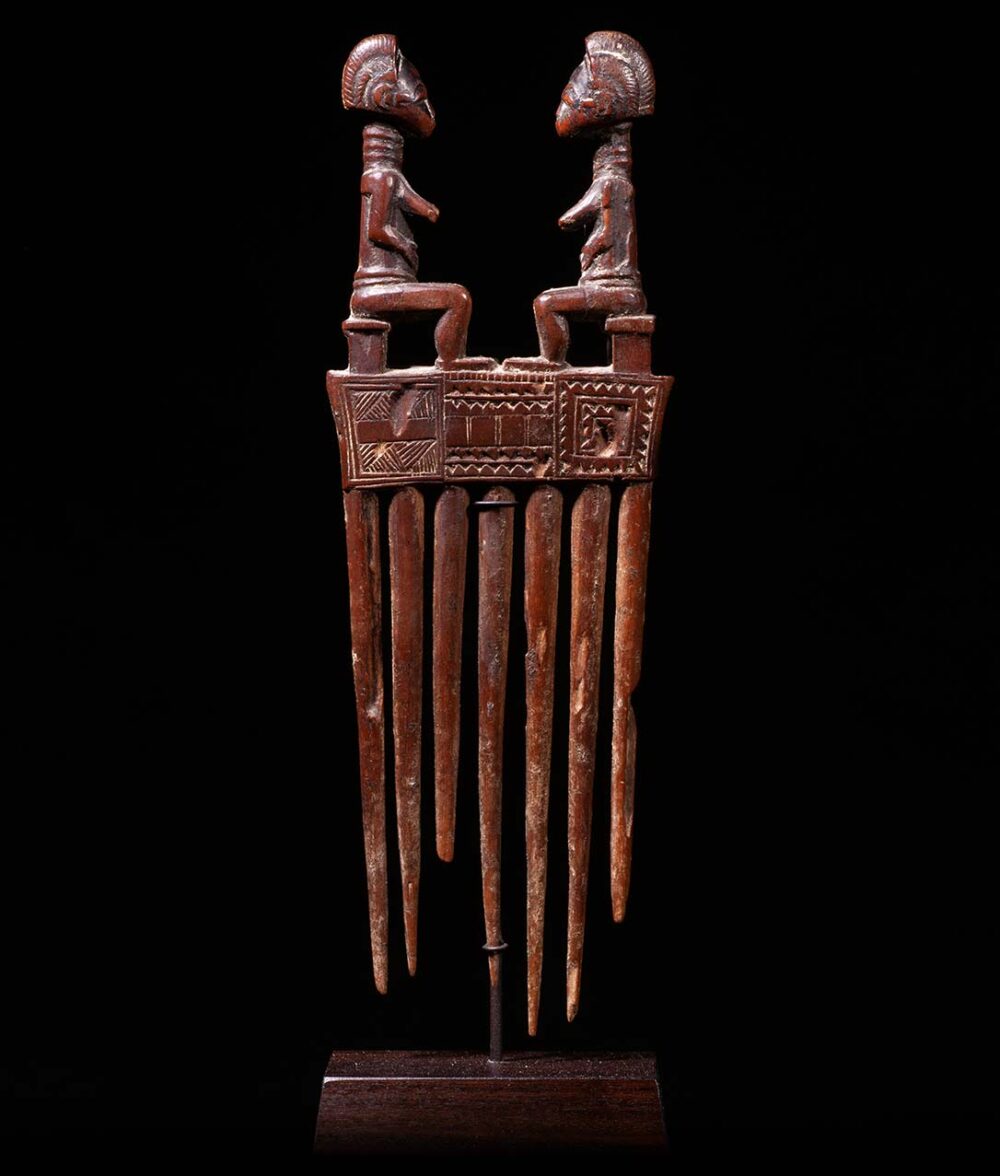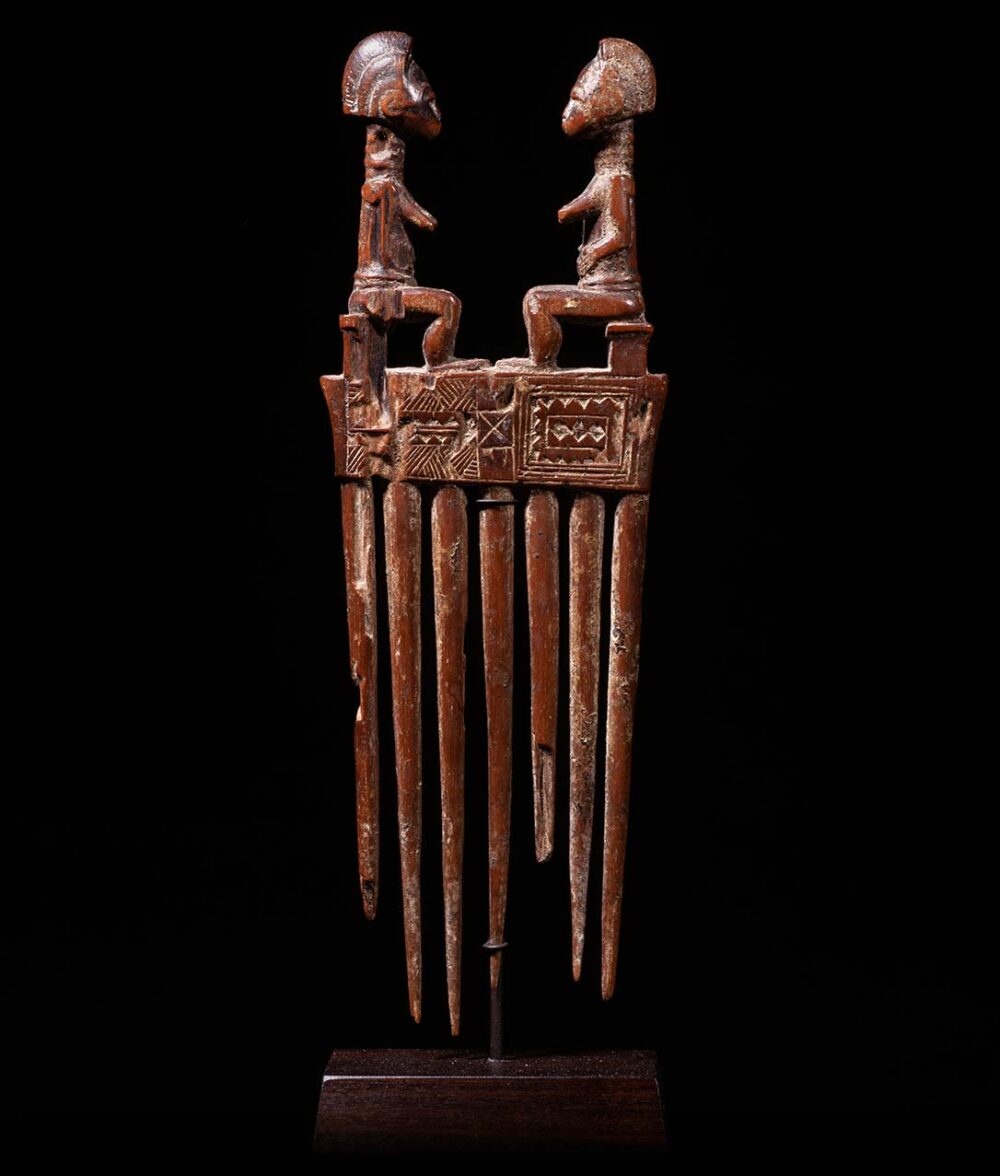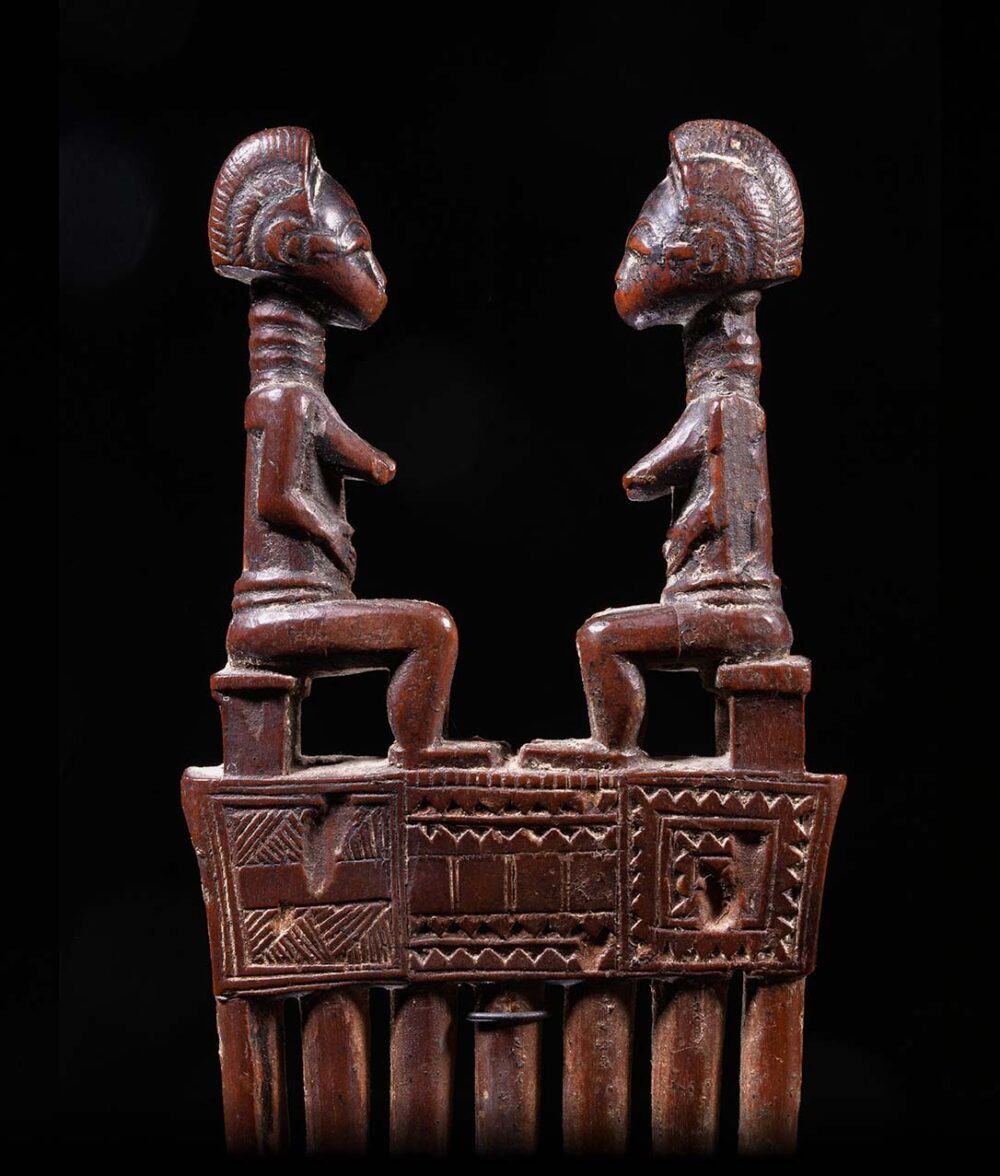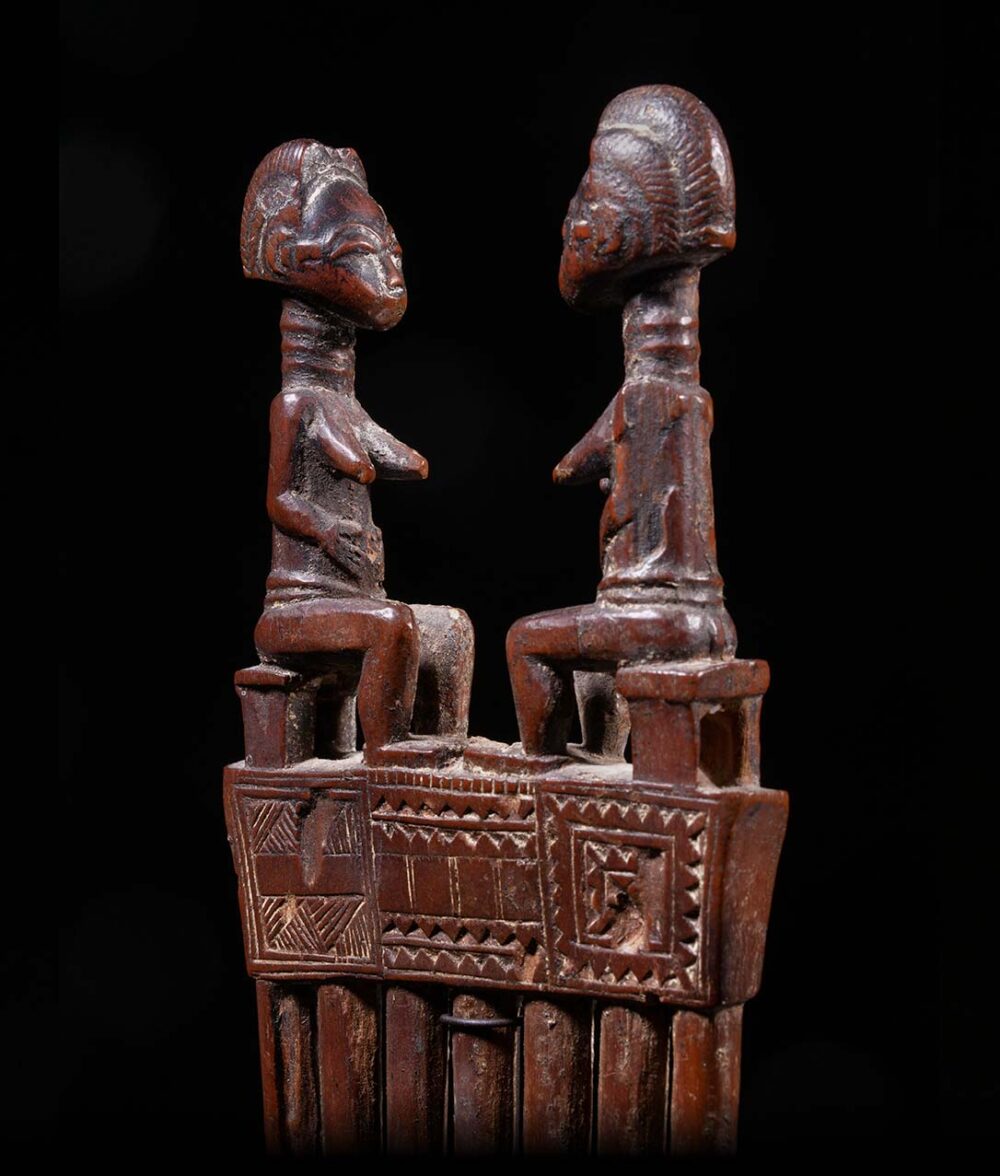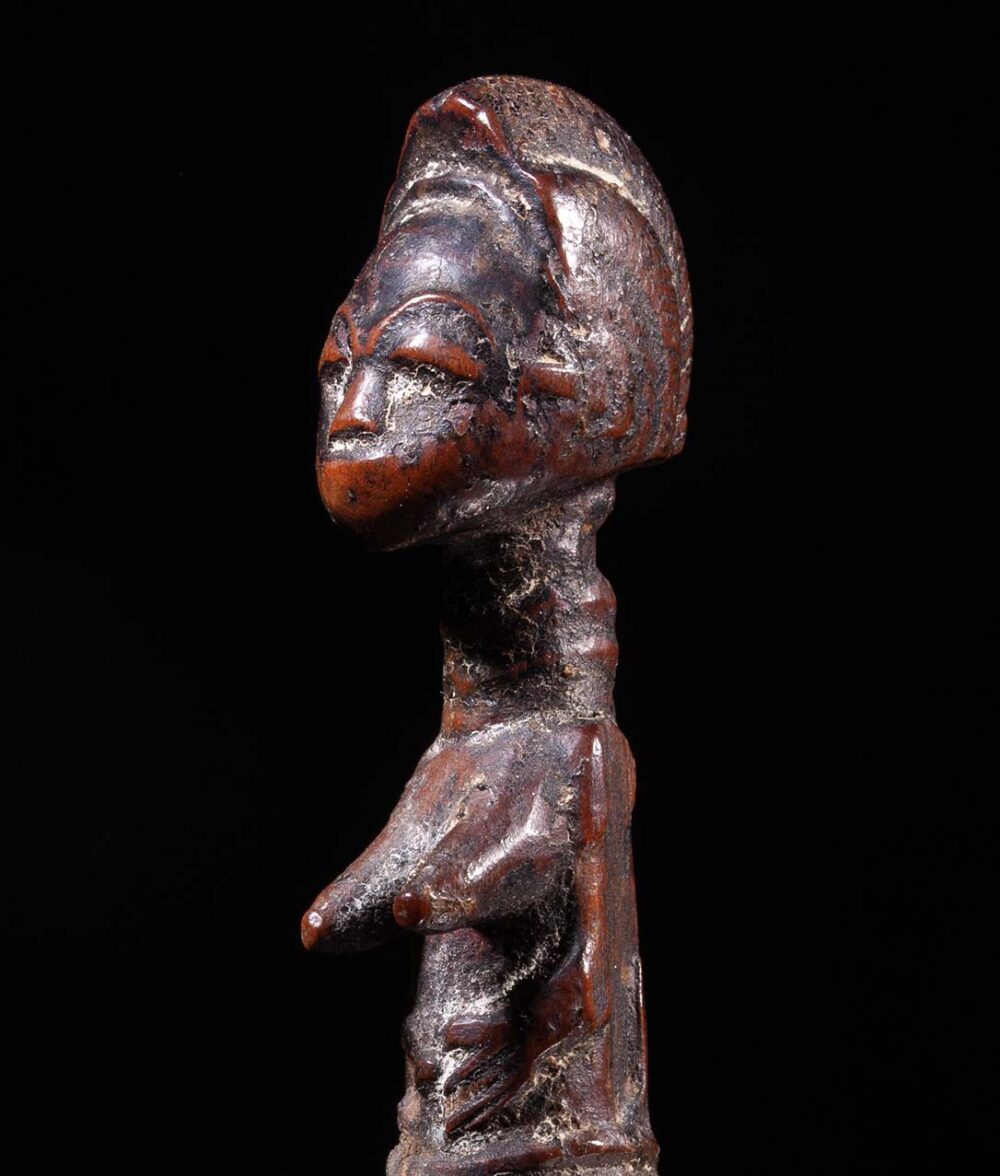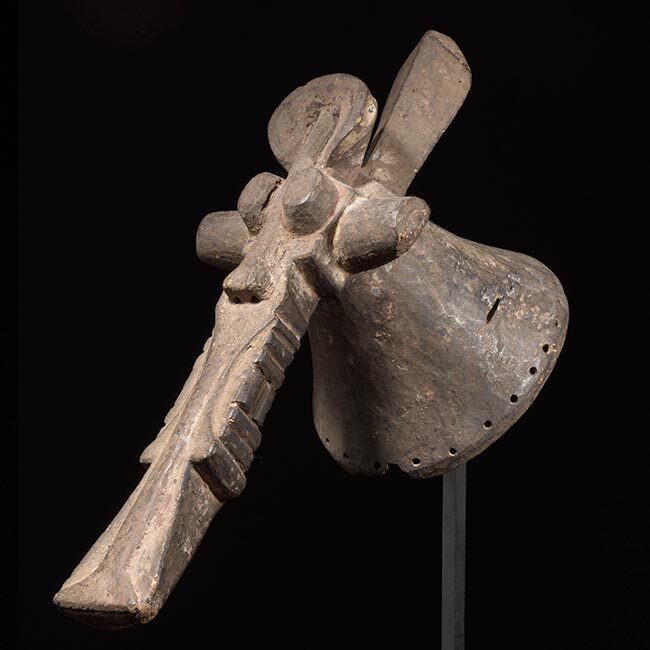Comb
Baule, Ivory Coast
Early 20th c
Provenance: Ben Heller collection, NY.
This comb is not just a functional item, but also a work of art with deep cultural significance. The two female figures seated on traditional stools represent important ancestral or spiritual figures in Baule culture. The comb itself, as a grooming tool, is also associated with personal hygiene and beauty, which are highly valued in Baule society. In Baule culture, the two seated female figures who face one another are known as “asie usu” or “blolo bla.” These figures are considered to be spiritual or supernatural beings that represent the ideal of perfect beauty and feminine grace. They are considered to be protectors of fertility, health, and well-being. The comb may have been used in religious ceremonies, such as offerings or blessings, or as part of divination practices. The comb may have also been used as a symbol of status or wealth, as finely crafted wooden objects were highly prized in Baule culture. The comb is in excellent condition, its surface is well worn and exhibits a lovely dark brown patina.
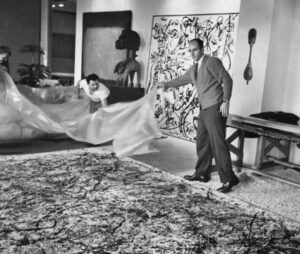 Ben Heller was an American art dealer and collector who was born in 1925 and passed away in 2020. He was known for his extensive collection of tribal art from Africa, Oceania, and the Americas, which he acquired over a period of several decades. Heller’s contribution to the world of tribal art was significant, as he played an important role in introducing and promoting these art forms to a wider audience. He was particularly interested in the art of the Baule people of Ivory Coast, and he helped to bring their art to the attention of collectors and museums in the United States. Heller was also a pioneer in the field of contemporary art, and he was instrumental in promoting the work of many famous artists, including Mark Rothko, Jasper Johns, and Robert Rauschenberg. He played a key role in the development of the New York art scene in the 1950s and 1960s, and his gallery was an important gathering place for artists, collectors, and critics during this time.
Ben Heller was an American art dealer and collector who was born in 1925 and passed away in 2020. He was known for his extensive collection of tribal art from Africa, Oceania, and the Americas, which he acquired over a period of several decades. Heller’s contribution to the world of tribal art was significant, as he played an important role in introducing and promoting these art forms to a wider audience. He was particularly interested in the art of the Baule people of Ivory Coast, and he helped to bring their art to the attention of collectors and museums in the United States. Heller was also a pioneer in the field of contemporary art, and he was instrumental in promoting the work of many famous artists, including Mark Rothko, Jasper Johns, and Robert Rauschenberg. He played a key role in the development of the New York art scene in the 1950s and 1960s, and his gallery was an important gathering place for artists, collectors, and critics during this time.
Comb
Baule, Ivory Coast
Early 20th c
Provenance: Ben Heller collection, NY.
This comb is not just a functional item, but also a work of art with deep cultural significance. The two female figures seated on traditional stools represent important ancestral or spiritual figures in Baule culture. The comb itself, as a grooming tool, is also associated with personal hygiene and beauty, which are highly valued in Baule society. In Baule culture, the two seated female figures who face one another are known as “asie usu” or “blolo bla.” These figures are considered to be spiritual or supernatural beings that represent the ideal of perfect beauty and feminine grace. They are considered to be protectors of fertility, health, and well-being. The comb may have been used in religious ceremonies, such as offerings or blessings, or as part of divination practices. The comb may have also been used as a symbol of status or wealth, as finely crafted wooden objects were highly prized in Baule culture. The comb is in excellent condition, its surface is well worn and exhibits a lovely dark brown patina.
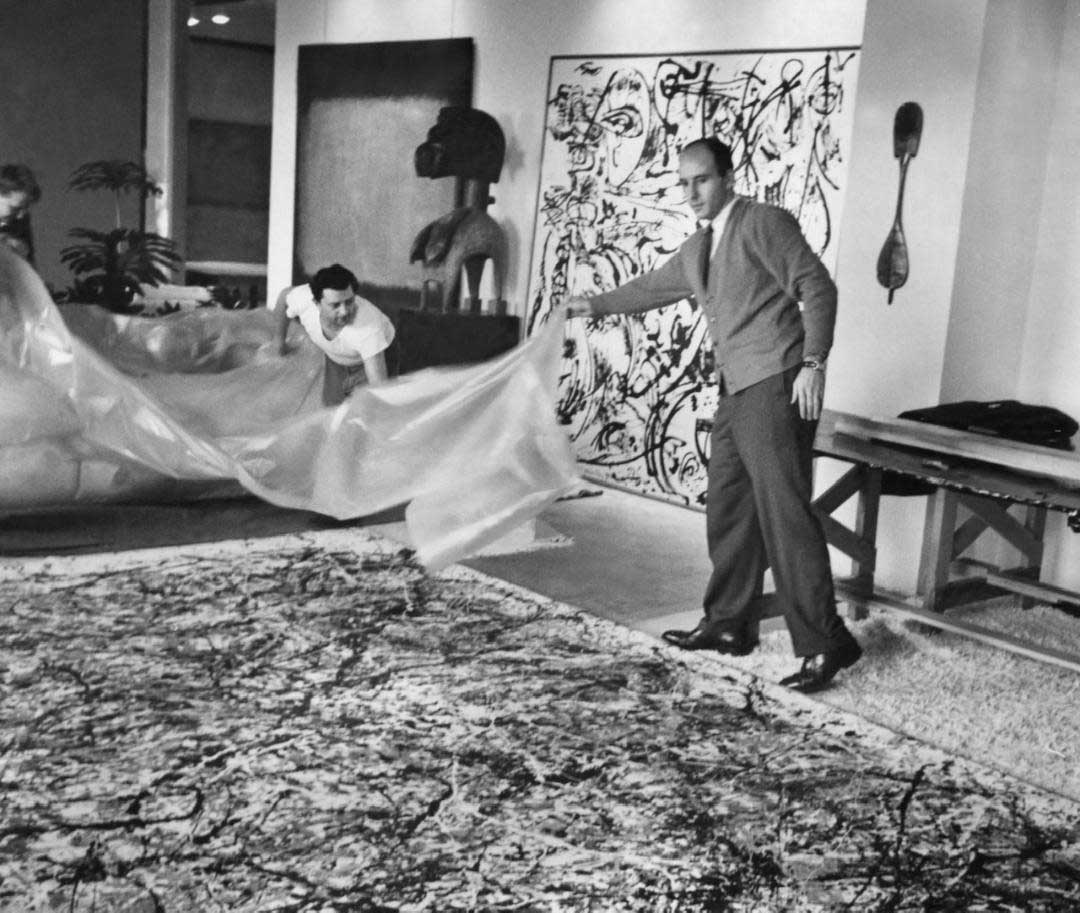
Ben Heller was an American art dealer and collector who was born in 1925 and passed away in 2020. He was known for his extensive collection of tribal art from Africa, Oceania, and the Americas, which he acquired over a period of several decades. Heller’s contribution to the world of tribal art was significant, as he played an important role in introducing and promoting these art forms to a wider audience. He was particularly interested in the art of the Baule people of Ivory Coast, and he helped to bring their art to the attention of collectors and museums in the United States. Heller was also a pioneer in the field of contemporary art, and he was instrumental in promoting the work of many famous artists, including Mark Rothko, Jasper Johns, and Robert Rauschenberg. He played a key role in the development of the New York art scene in the 1950s and 1960s, and his gallery was an important gathering place for artists, collectors, and critics during this time.



